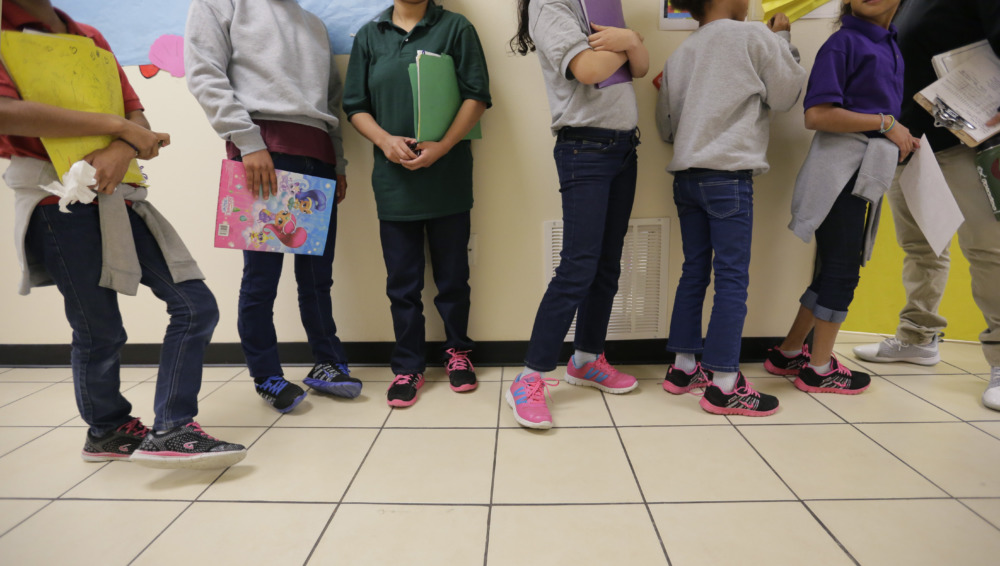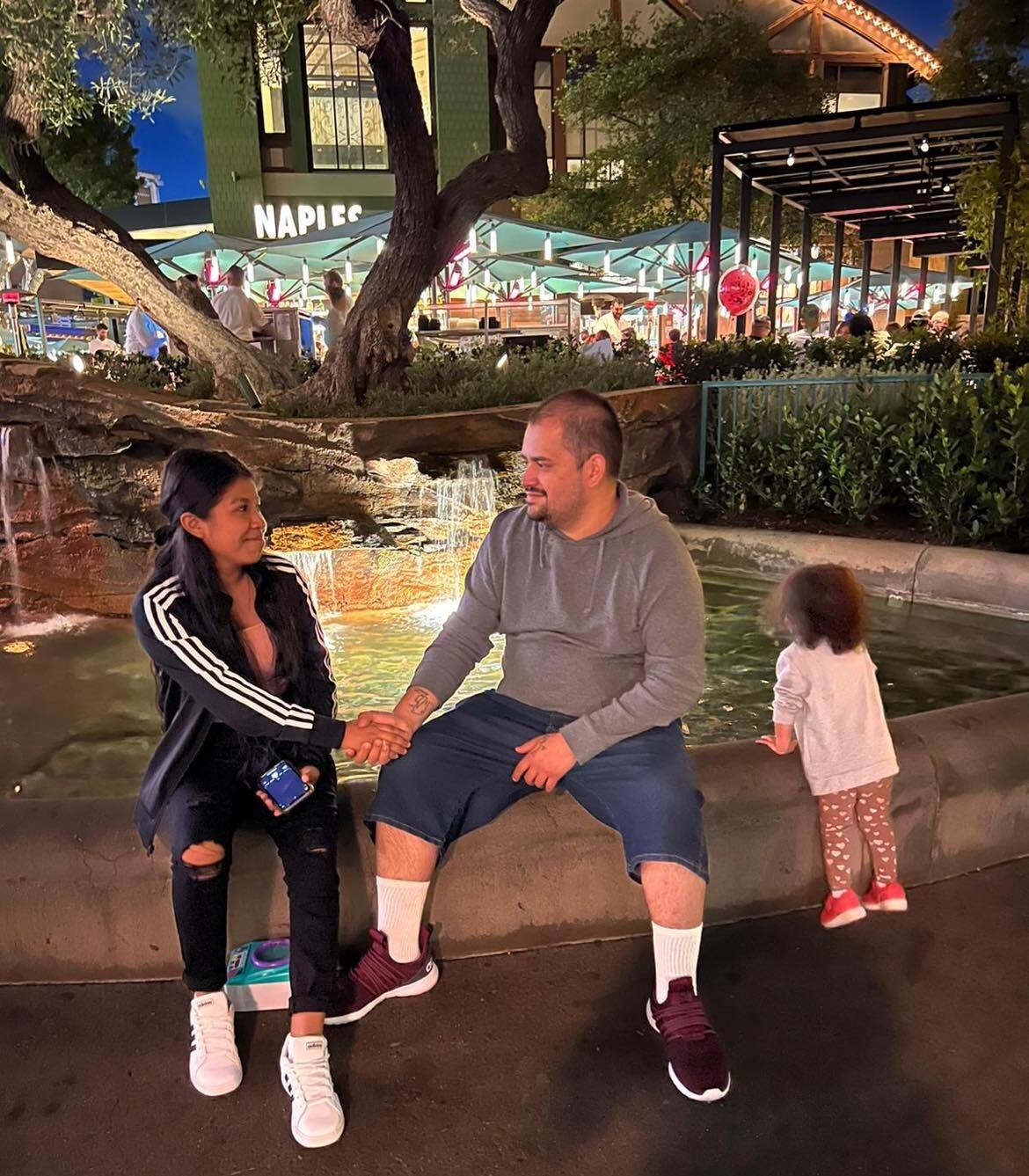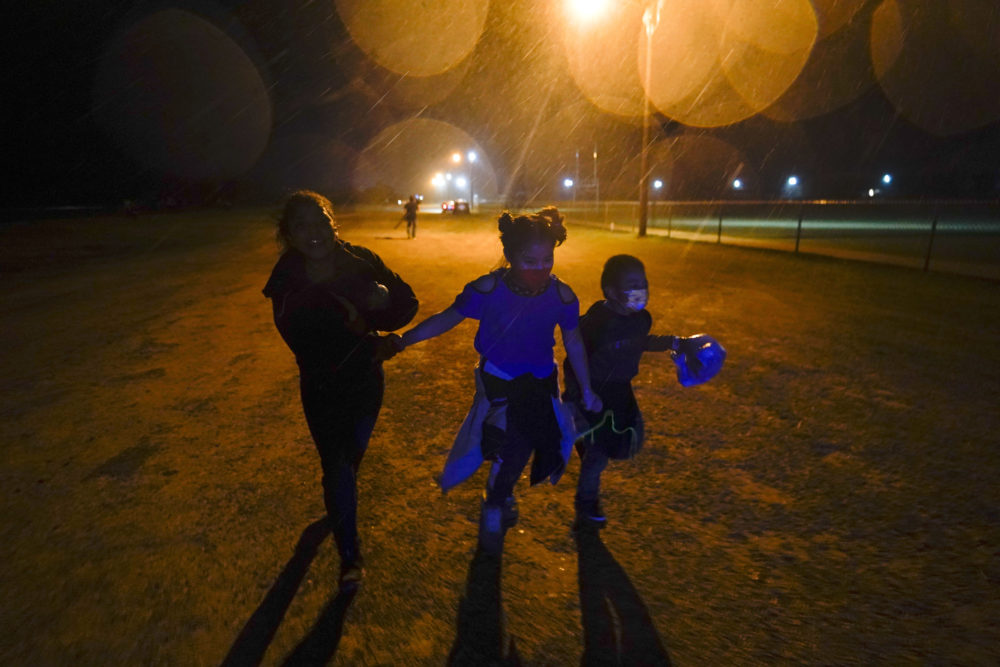Jocelyn Michelle Cruz Rivera, 17, said goodbye to her mother and left Guatemala City on Jan. 31, 2022. She and a dozen other migrants traveled first to a house on the Guatemala side of the Mexican border, then to the southern Mexico state of Chiapas. After staying about a month at a crowded Chiapas motel, they piled into trucks and drove north to Mexicali, just across the border from Calexico, California.
Once the sky was dark, they were driven to a border crossing marked only by a natural rock formation. She and other migrants scrambled across the rocks into the U.S.
Soon after, Border Patrol agents apprehended them.
“They said ‘Welcome to the U.S., you are safe now,’” Jocelyn said.
But it is unclear what opportunity and security await Jocelyn in the U.S.
New federal policies that took effect last month now offer some immigrant children protection from deportation and an easier path to legal residency. However, full details on the extent of that protection have yet to be released. And many young immigrants like Jocelyn will continue to face the dual challenges of coping with traumatic experiences in their home countries or along their journeys, while planning for their uncertain futures in the U.S.
The changes to the Special Immigrant Juvenile program, a 1990 program intended as a humanitarian path to lawful residency for immigrant children and youth who have been abused, neglected, or abandoned by at least one parent, were announced earlier this year.
The changes make it easier for young immigrants to apply for the special status. And once their petition has been approved — the first step towards legal residency — they now will generally be protected from deportation and can apply for work permits.

Courtesy of Jocelyn Michelle Cruz Rivera
Jocelyn Michelle Cruz Rivera, 17, left her mother behind in Guatemala when she entered the U.S. earlier this year. She now lives with family members in Norman, Okla.
Jocelyn, whose father left her family when she was young, intends to apply.
“Today, we are taking action to help immigrant children in the U.S. who have been abused, neglected, or abandoned and offer them protection to help rebuild their lives,” said U.S. Citizenship and Immigration Services Director Ur M. Jaddou in announcing the changes. “These policies will provide humanitarian protection to vulnerable young people for whom a juvenile court has determined that it is in their best interest to remain in the United States.”
About 44,000 SIJS grantees waited in the backlog as of last April 2021, according to a November 2021 report by the End the SIJS Backlog Coalition. Jocelyn will likely join this backlog for years even if SIJS is granted, waiting for an opportunity to apply for a visa.
U.S. Customs and Border Protection has apprehended 84,235 minors entering the country without a parent or guardian at the U.S.-Mexican land border this fiscal year, a 30.4% increase from this time last year. The agency places them in shelters and then either unites them with family members in the U.S. or places them in foster care.
About 40% of unaccompanied minors at the southwestern border are coming from Guatemala, the highest share of any nationality.
Jocelyn’s mother, who can’t pay her school fees and has trouble buying food sometimes, paid a smuggler $3,000 to bring Jocelyn to the U.S. in the hope she could pursue education and financial security. She borrowed the money from Jocelyn’s aunt and uncle, who live in Norman, Oklahoma. The uncle, Cesar Salazar, himself emigrated as an unaccompanied minor from Guatemala over 20 years ago.
After being apprehended by the Border Patrol, Jocelyn was sent to El Rinconcito del Sol, a federally funded, privately operated shelter for unaccompanied girls between the ages of 13-17 in Lake Beach, Florida. During the month she spent at the shelter, she started cutting herself.
In Jocelyn’s telling, she was watching TV and a woman told her she couldn’t watch TV and should go to her room.
“Since I couldn’t hit or punch the woman, I went to my room and cut myself just so I could do something,” Jocelyn said.
After that, Jocelyn was kept under 24-hour supervision, she said.
“If I saw something sharp, I just wanted to grab it and cut myself,” she said.
Eventually, she formed a connection with one of the teachers at the shelter, which offers schooling.
“She treated me like a daughter, gave me advice,” said Jocelyn.

Eric Gay/AP
Migrant teens line up for a class at a facility for babies, children and teens in Texas’ Rio Grande Valley.
El Rinconcito Vice President AnnaMarie Bena said her organization has been seeing more self-harm in recent months, and that other shelters have reported the same.
“We don’t know what the cause is, and we don’t know if it is going to last,” she said. “When we see something like this, we have specialists come in.”
These therapists meet weekly with the girls in small groups to discuss self-harm behavior. All of the girls also have one-on-one sessions with their clinicians. Additional care is provided for girls who harm themselves, including one-on-one supervision, cognitive behavioral therapy, grounding techniques, mindfulness and a “no self-harm agreement” the girls sign, Bena said.
Self harm and other effects from trauma are not uncommon for young immigrants who apply for SIJS, said Maria Huera Rodriguez, a youth leader for End the SIJS Backlog Coalition.
“[SIJS youth] do face a lot of trauma. Just to be eligible you have to be abandoned, neglected, or abused,” she said.

Courtesy of Jocelyn Michelle Cruz Rivera
Jocelyn Michelle Cruz Rivera, left, now lives with her uncle, Cesar Salazar, right, who emigrated as an unaccompanied minor from Guatemala over 20 years ago. They’re pictured here during a family visit to Disneyland earlier this year.
Lidia Valadez, social services provider-manager at Diocesan Migrant and Refugee Services in El Paso, Texas, works with shelters and community service providers to connect unaccompanied minors with post-release support such as medical, legal aid, education and transportation for appointments, including mental health.
“A lot [of unaccompanied minors] come fleeing gang threats, poverty, violence, abuse, rape — not just in their home countries, but also in their journeys,” she said. “These minors need to be educated to know that resources are out there, they’re just very fearful of asking for help.”
Jocelyn now lives in Norman, Oklahoma, with the aunt and uncle who paid for her journey and their child.
Although Jocelyn says she dislikes the cold weather, she does not miss Guatemala. She does miss her mother. She has stopped cutting herself and sees a psychologist once a month.
Jocelyn started her junior year at the local public high school this May without any English skills or legal status. She says she can’t understand the teachers. Her first week of school, a couple of girls called her negra (Black) and fea (ugly) and tried to drag her down by her hair. After she fought back, she and the students who attacked her were suspended from school.
“We are working with psychologists and all, but we don’t know [the extent of her trauma],” said her uncle, Cesar Salazar. “She is so angry.”
***
Jo Lutz is a journalist based in Silver City, New Mexico. A graduate of Oberlin College, she covers immigration and regional history for publications including Youth Today.






























